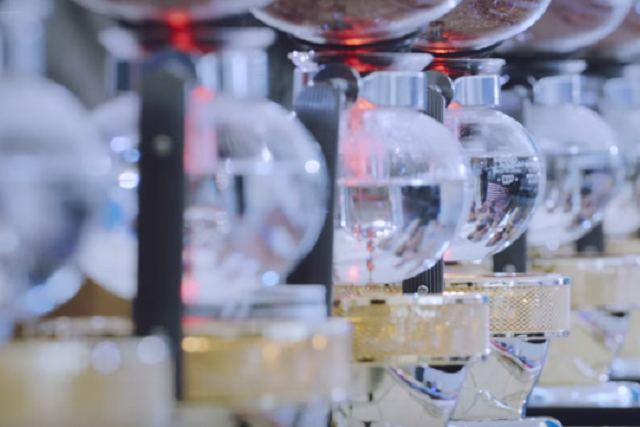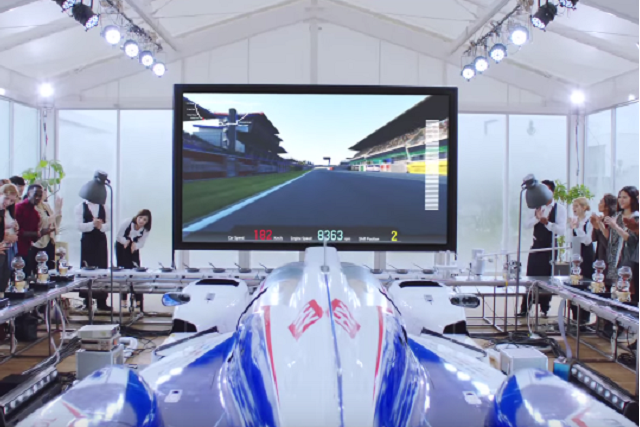Where once the word “hybrid” might as well have been slang for “slow, boring, ugly egg-car”, the word has been given something of a sexy, speedy makeover thanks to motorsports. Kinetic Energy Recovery Systems, or KERS, have become commonplace in both Formula 1 and the World Endurance Championship, turned the energy usually lost during braking into usable electricity that can provide a burst of speed, or coffee and breakfast for a few dozen people.
 By hooking up the Toyota TS040 Hybrid into a Rube Goldberg-style breakfast device, the Japanese automaker was able to convert 6,000,000 joules of recovered energy from a single lap into 171 cups of coffee, 83 slices of toast, and 57 fried eggs. It’s easily the most original motorsports marketing campaign we’ve ever seen, and from Toyota of all companies.
By hooking up the Toyota TS040 Hybrid into a Rube Goldberg-style breakfast device, the Japanese automaker was able to convert 6,000,000 joules of recovered energy from a single lap into 171 cups of coffee, 83 slices of toast, and 57 fried eggs. It’s easily the most original motorsports marketing campaign we’ve ever seen, and from Toyota of all companies.
This is what we mean when we say that hybrid drivetrains really are the future of motorsports, as previously all that energy was wasted in the form of brake heat. These hybrid systems use electric motors to slow cars like the TS040 down (to overly simplify things), having the dual effect of both recovering some of that energy for later use, and preserving brake paid life during the long and grueling races the WEC is known for.
Regulations limit how much energy can be recovered based on factors like combustion engine size and forced induction, and the 6 megajoules (or 6,000,000 joules as Toyota described it) sits smack dab in the middle of what’s allowed. It can be hard to quantify just how much energy per lap that is, which is the real brilliance of this Toyota marketing stunt. By putting this vague notion of energy into something you can hold, smell, and eat, the concept is much easier to digest.
It’s this hybrid system that allowed Toyota to walk away with the WEC championship last year, so you might even call this the Breakfast of Champions.






















